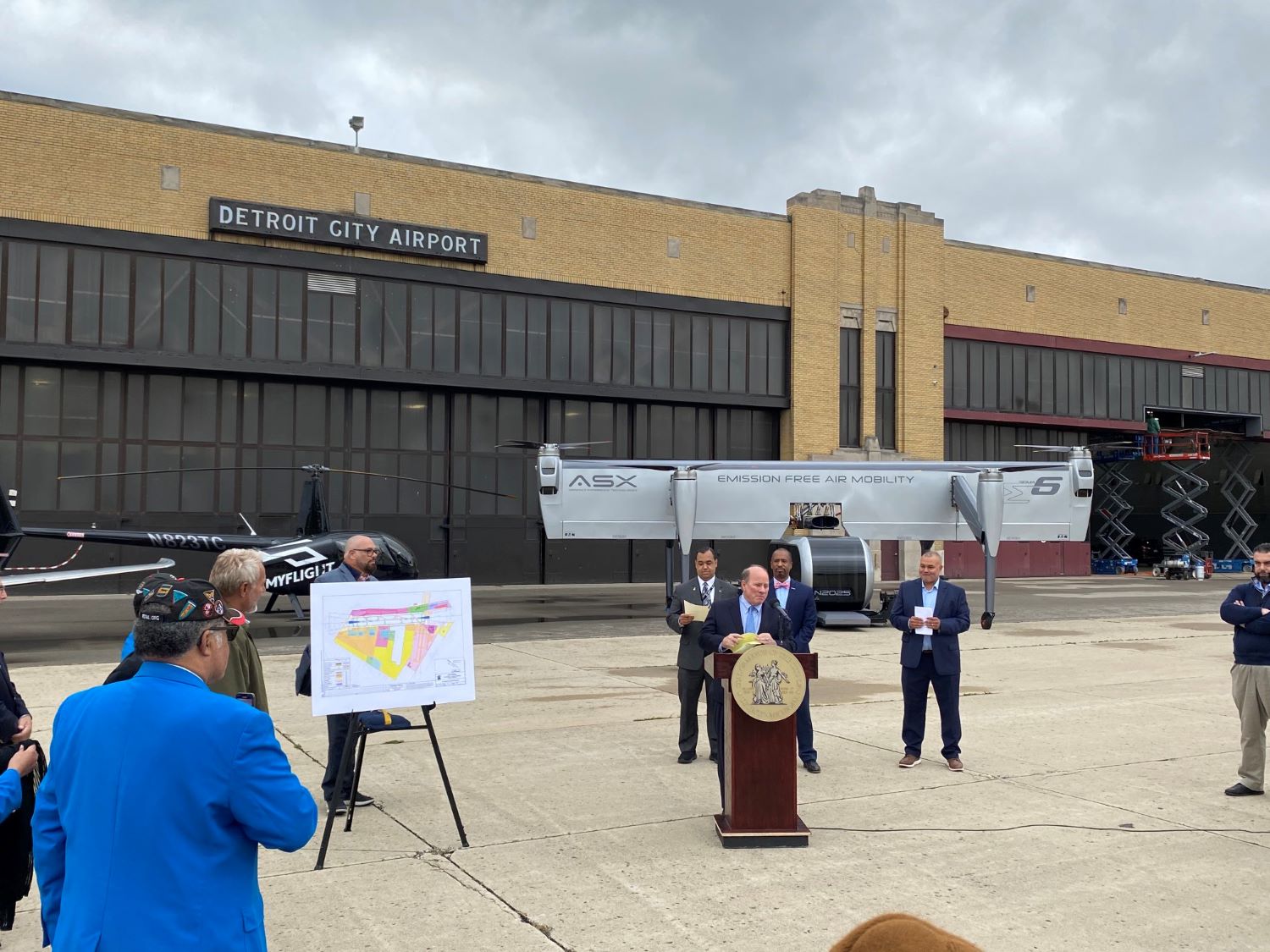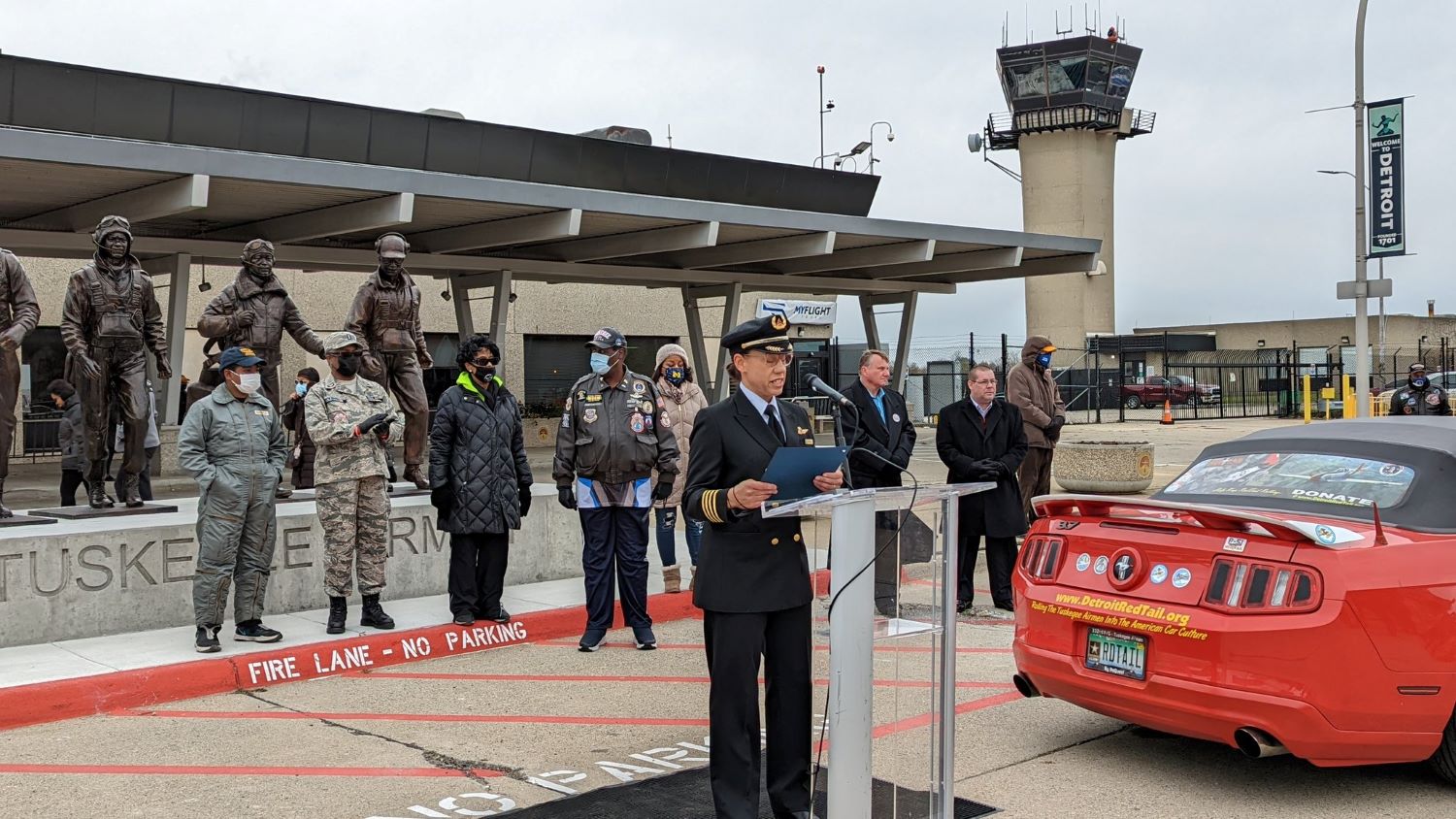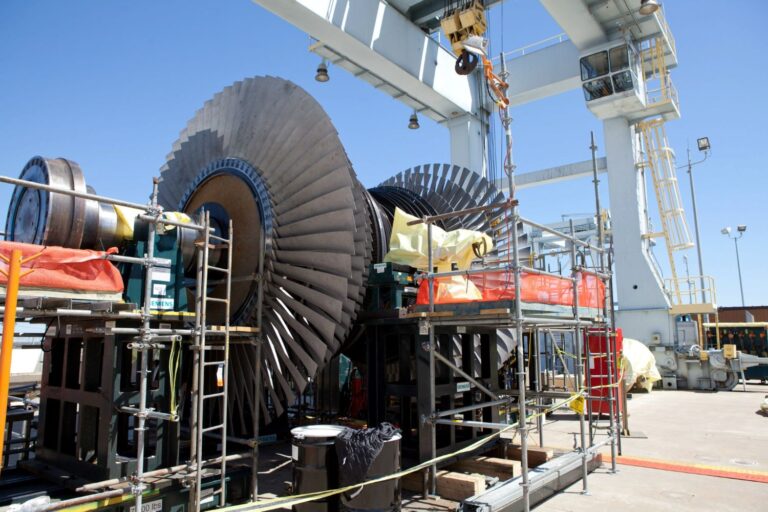Getting New Coat: Detroit Revives the City’s Airport After the Storm
Coleman A. Young International Airport in Detroit was once one of the busiest in the United States. However, in 2018, the airport, which was in a perpetual state of disrepair, was the focus of a heated local discussion over whether it should remain open or be transformed for other uses.
But the war was over, and in 2022, city officials and legacy airmen celebrated the Federal Aviation Administration’s approval of Detroit’s first Airport Layout Plan in 30 years.
Now the future of the airport is ensured by not only the fund, but also the steps of execution. To revolutionize the Detroit City Airport, the City has solicited a contract to design and engineer plans for the renovation of concrete pavement surfaces throughout the Coleman A Young International Airport (CAYIA) site where necessary.
However, to understand the mutual benefit that the contract is bringing to the City airport, let’s go all the way back to its window of time when the city was almost ended.
A Phoenix’s Journey – Detroit’s Sparkling Rebirth from Ashes
Detroit is a vibrant, varied city with a fascinating past. It’s a place full of people and places, trends and events, game-changing inventions, and ground-breaking music. Long known as the world’s automobile capital, Detroit is also renowned for its distinctive Motown music style from the 1960s.
Detroit was essential in the industrialization of America throughout the twentieth century, and it is poised to shift as technology advances into the twenty-first.
For hundreds of years, the area was so vital to Native American tribes’ commerce that only traders were permitted to enter.
Over the early part of the 20th century, numerous businesses arose in the area committed to finding success in the new industry. During World War II, the factories they built to make vehicles were used to make armaments for the Allies. They contributed to the war’s victory by providing a competitive manufacturing advantage.
The unemployment rate in Detroit is currently lower, although this is owing to a diminishing labor force. Manufacturing and finance have seen employment losses, but lodging, food services, and government administration are on the mend. Concerns about blue-collar sectors remain, but the Detroit economy remains optimistic.
The City wears a stunning outfit right now, but there’s a time when Detroit suffered from infamous decline through the loss of hard industry and people – its population has declined by over 60% since 1951. The city’s ultimate humiliation came in 2013, when it was forced to declare bankruptcy due to years of debt and municipal mismanagement.
In the meantime, Detroit Airport has been allowed to fall into rack and ruin, mirroring the city’s greater plight, and it was notably included as an asset with the option to sell during Detroit’s bankruptcy filing nine years ago.
Southwest Airlines and Pro Air used to operate Boeing 737s from the airport, but it had no scheduled passenger flights and serves largely private aircraft and corporate aviation. Because of its low status, Detroit Airport didn’t even have its own website and employs only 200 people.
In recent years, there has been a controversy about whether to keep the airport operational or close it and reuse the 264-acre site for non-aviation purposes, such as an industrial park. In 2018, the city turned down a $4 million bid from private investors to build a new terminal and hangars on the property.
The primary emphasis of the debate over Detroit Airport was what it could offer to the local economy. Its location is advantageous, as it is only six miles from downtown Detroit. Some claim that the site is ripe for redevelopment in a city that has a chronic shortage of decent properties.
A New Era Dawns – Detroit City Airport Embraces a Brighter Future
In many ways, the controversy over Detroit Airport reflects a rising loss of smaller municipal airports in the United States as a result of budget cuts. According to the Aircraft Owners and Pilots Association, approximately 50 American airports permanently close their doors each year.

For more than two decades, Detroit City Airport, now known as Coleman A. Young Municipal Airport, served as the region’s major airport. Detroit City Airport evolved into a center of pilot training and one of the country’s most concentrated destinations for private and business aviation, yet it continued to operate occasional commercial flights until 2000.
The City of Detroit was unable to create a runway safety zone to allow larger planes due to the airport’s proximity to Gethsemane Cemetery, forcing the remaining airlines to cancel all commercial flights.
Since 2000, the City of Detroit has not staffed the airport’s fire station, has not invested in major structural modifications, and has not given long-term leases to corporate aviation companies.
“Many local governments don’t understand the long-term benefit to their community of an airport.” “The fate of airports in the United States is a sad state of affairs,” said Paul Freeman, who runs the online database Abandoned and Little-Known Airfields.
He added, “We are watching our aviation heritage – and an amazing amount of aviation infrastructure – slipping away. Many local governments don’t understand the long-term benefit to their community of an airport, and are often swayed by the one-time financial gain that can be obtained from selling off public property to commercial developers.”
According to Freeman, a large part of the problem is that local governments have little understanding of how and why smaller airports were supported in the first place.
“Many airports in the US were built primarily with federal government funds, and local politicians often have absolutely no appreciation for how much money was invested in the aviation infrastructure that was gifted to them by the federal government,” he stated.
Just a few years ago, the future of Coleman was uncertain, but the bright days had come to the airport.
In October 2022, Detroit received federal approval for a plan to put its city airport back on track. City officials say the newly authorized Federal Aviation Administration layout design offers up a world of possibilities — as well as up to $100 million in federal funds.
The plan asks for the construction of new aircraft hangars as well as a new air traffic control tower. It would also relocate the Benjamin O. Davis Aerospace-Technical High School and decommission a runway, freeing up an extra 80 acres for “airport-related development.”
Detroit Mayor Mike Duggan stated that in recent years, industrial facilities have returned to the nearby east side area, and more corporations have expressed interest but need assurances concerning the airport.
“They wanted to know what the future was going to be,” Duggan said. “They want to know there was going to be first class facilities and a safe airfield here. I think now that we can tell them, that is going to open up a lot of opportunities.”
The City decided to execute the transformation step by step, one of the initial moves is to repair or replace failing concrete paving at various areas of the airport.
A project budget of $1,100,000 Dollars has been established for this project. This design phase is to design and produce professional engineering documents and specifications for the repair and/or replacement of damaged concrete pavement at the CAYIA.
New Concrete Pavement – Revitalizing Coleman A. Young International Airport
The City of Detroit was looking for a vendor who could offer a wide range of services. The Respondent would be in charge of delivering the professional engineering and design services required to create the papers and specifications for the repair and replacement of damaged concrete pavement at CAYIA.
This comprises managing and supervising the Work’s assessment and analysis, as well as coordinating with the (Detroit Building Authority) DBA.
We are in the best position to learn more about what the contractor needs to serve, the next part will explain the scope of work. Let’s read on.
Great Plan Comes with Great Responsibilities
The scope of services includes a response known as the Design Team, who is in charge of providing professional engineering and design services for the repair and replacement of damaged concrete pavement at the airport. The Design Team will be in charge of coordinating and supervising all areas of the project.
The Design Team’s first task is assessment services, which includes studying the project and giving counsel, advice, and design and planning recommendations.
This includes stages such as visual site inspection, schematic design, design development, sustainability design, construction document preparation, and construction administration.
Additionally, the Design Team will conduct design reviews, evaluating the recommendations made during the design process, considering factors such as cost, schedule, and operational efficiency without compromising safety or design quality.
Programming and design are additional components of the Design Team’s responsibilities. This involves conducting interviews with site and facility user groups to gather input and create a design program. The program will be presented to the DBA and CAYIA for review, with revisions made if necessary before finalization.
The Design Team will also prepare comprehensive construction documents based on the approved design development package. These documents will outline the requirements for construction on the site and include project specifications detailing materials and quality levels.
During the construction phase, the Design Team will collaborate with the selected construction contractor, reviewing the construction schedule, approving requests for information (RFI), shop drawings, project data, and samples to ensure compliance with contract documents.
Site visits will be conducted for construction observation, project review, and general oversight, coordinated with the DBA and the contractor at significant milestones. The Design Team will also review proposed change orders, assist in their processing for approval, participate in weekly construction project progress meetings, and certify that all contractor work is performed in accordance with the project’s construction documents.
At the project’s completion, the Design Team will conduct final project walk-throughs with the DBA (Detroit Building Authority), prepare a punch list, and submit it for a certificate of substantial completion.

Once the Design Team completes their responsibilities, conducting final project walk-throughs and preparing a punch list for the DBA (Detroit Building Authority), the project transitions into the evaluation phase.
Custom-Made for Success – Seeking the Perfect Fit for Transformation
The Detroit Building Authority scored qualifications and local preferences on a scale of 100 points. Qualifications account for 65 points, while local preferences make up 35 points. Short-listed vendors are invited to submit pricing through an RFP after the scoring process. The qualifications were evaluated by a team of at least three reviewers who rank each contractor’s qualifications independently.
The Raw Ranking Score was calculated by summing the evaluation rankings from each reviewer, with a lower score indicating a higher qualification. The minimum Raw Ranking Score was equal to the number of reviewers, and the maximum Raw Ranking Score is determined by multiplying the number of reviewers by the number of qualified submittals being scored.
The formula to convert Raw Ranking Scores into Qualification Evaluation Points is as follows:

The maximum number of Proposal Evaluation Points a Respondent can score is 65, and the minimum is 0.
For example, if seven Respondents provide qualified submittals, each reviewer would rank the qualified submittals from 1 to 7, with 1 being the most preferred and 7 being the least preferred. The following table presents an example:
| Respondent | Reviewer 1 Ranking | Reviewer 2 Ranking | Reviewer 3 Ranking | Reviewer 4 Ranking | Reviewer 5 Ranking | Raw Ranking Score | Qualification Evaluation Points |
| A | 1 | 1 | 1 | 1 | 1 | 5 | 65.00 |
| B | 2 | 3 | 2 | 2 | 2 | 11 | 36.00 |
| C | 3 | 2 | 4 | 3 | 3 | 15 | 30.00 |
| D | 4 | 4 | 3 | 4 | 6 | 21 | 21.00 |
| E | 6 | 5 | 5 | 6 | 5 | 27 | 12.00 |
| F | 5 | 6 | 6 | 5 | 4 | 26 | 13.50 |
| G | 7 | 7 | 7 | 7 | 7 | 35 | 0.00 |
In the proposal submission, Respondents should consider several factors that would be evaluated. These include the schedule, capacity, experience, and other qualifications. The schedule should align with project milestones, and evaluators would look for detailed schedules.
Capacity was assessed based on licenses, staff, and resources. Experience was reviewed through evidence of successful similar projects, licenses, certificates, and references. Respondents might also include additional information highlighting their qualifications.
Local preferences were scored based on whether the business is Detroit-headquartered or Detroit-based, with corresponding points assigned in different evaluation phases.
The Selection Committee also evaluated the ability of the prospective Respondent to meet the terms of this RFP relative to having a management team with the qualifications needed to successfully complete each work item.
This solicitation had just closed on April 14, 2023, and the City had chosen the most compatible vendor with the ongoing demands. Since the company would create an impact on the revolution of Detroit City Airport, the benefits that vendor offers vary.
The Secrets of Abundance – A Step-by-Step Approach
A large airport will often have several million acres of pavements, which is a significant amount of infrastructure to maintain. The majority of large airports face the difficulty of keeping their pavements in good shape while not affecting airside operations.
In many cases, by the time one section of pavement has been rehabilitated and repaired, another section will be ready for maintenance or perhaps reconstruction. To make problems worse, these are usually the most heavily trafficked pavement locations – those susceptible to large aircraft activity, often with hundreds of passengers on board.
The Federal Aviation Administration (FAA) has long supported the use of an Airfield Pavement Management System (APMS) to provide each airport within the National Plan of Integrated Airport Systems information on the condition of their pavement systems.
Such a plan provides each airport with an engineering-based evaluation to develop budgets, maintenance types and capital improvement development for pavement maintenance, rehabilitation and reconstruction projects.

Replacing the damaged concrete pavement at Coleman Airport will have several positive impacts on the airport’s operations and infrastructure.
Firstly, it will enhance safety for both aircraft and ground vehicles by providing a smooth and reliable surface for landing, taxiing, and takeoff. The new pavement will minimize the risk of accidents or damage caused by uneven surfaces or potholes, ensuring a safer environment for airport operations.
Plus, replacing damaged concrete pavement will boost the efficiency and efficacy of ground handling activities. Smooth and well-maintained pavement facilitates the movement of baggage carts, fuel trucks, and other ground support equipment, resulting in shorter turnaround times for aircraft and enhanced overall operating performance.
Also, the improved pavement may contribute to a better passenger experience. It provides a smoother and more comfortable surface for airport visitors, particularly in areas such as terminals, parking lots, and walkways. This enhancement has the potential to increase passenger happiness and provide a favorable impression of the airport.
Moreover, by investing in the replacement of damaged pavement, Coleman Airport demonstrates its commitment to revive the airport.
Connecting the Dots – The City’s Airport and Its Ardent Mission in the Larger Picture
According to Jason Watt, Detroit’s airport director, the first Airport Layout Plan brings the airport into line with FAA regulations and is the result of a three-year effort.
“We are open for business,” Watt said Thursday. “I think the plan is beautiful. It gives us a plan for the future as well as it pays a little homage to the past.”
The Michigan Department of Transportation’s Aeronautics division has awarded Detroit an initial grant of $111,000 for partial repayment of the cost of producing the airport layout plan.
The additional hangars at the airport will feature space for executive business aircraft, twin-engine craft, and smaller hangars for single-engine planes, according to the plan. The hangars will also provide communal space for meetings and gatherings. This year will see the start of construction on these new hangars.

The FAA will fully fund the new tower as part of the bipartisan Infrastructure Investment and Jobs Act. The new tower’s site selection will begin in early 2023, with design beginning in 2024. The project is scheduled to be completed in early 2026.
The airport will also increase airfield safety by installing a new Engineered Material Arresting System (EMAS) at both ends of the runway. This FAA-approved approach was created to compensate for the runway’s lack of available real estate for conventional 1,000-foot safety areas without interfering with surrounding cemeteries.
Engine 20 at the airport was retired in 2012, shortly prior to the city’s bankruptcy, and firefighting responsibilities for the airport were transferred to a nearby fire station. In 2021, the city completed a renovation of Engine 20 on the grounds of City Airport, which is now training extra firemen and will be reactivated within the next year or two.
District 3 Councilman Scott Benson said the first airport layout plan is “a long timing, but we’re finally here.”
“When we talk about critical infrastructure in the city of Detroit, you cannot just buy an international airport. … The city is finally seeing what can be done and how we can use this infrastructure as an economic development revenue generator for the city and take the city airport off general fund and back on to a revenue generator,” Benson said.
Beverly Kindle-Walker, executive director of the Friends of Detroit City Airport, said they along with the Tuskegee Airman have stood through the thin.
“We don’t quit because we believe in our young people’s opportunity to have a chance in life through the aviation field,” she said. “We’ve been shovel-ready for a long time. We want to see aviation-related industry come here.”
At-large Councilman Coleman A. Young II said they are standing on the foundation of success for generations to come.
“I would like to thank the Friends of the City Airport, the Civil Air Patrol, the annual Christmas celebration, Davis Airspace and the Tuskegee Airmen for their continue diligence in keeping that Coleman A. Young International Airport as a place for young Detroiters come to enter the world of flight,” Young said. “I know my father would be very proud.”









